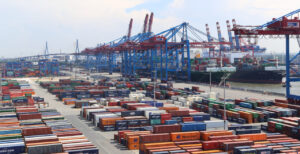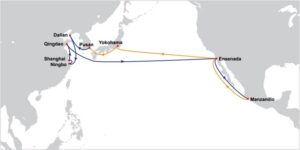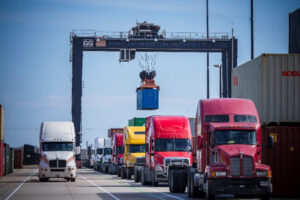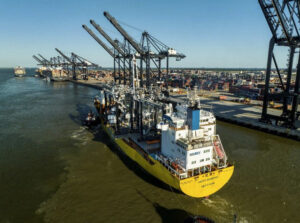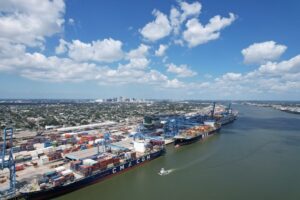Ports must look to digitalise their operations and make their environments safer, more efficient and sustainable if they are to remain relevant to the global supply chain in the future.
Ports should welcome disruption and seek out collaboration with other hubs and technology providers, said Allard Castelein, CEO, Port of Rotterdam Authority, who delivered the opening keynote at PTI’s Smart Digital Ports of the Future.
Castelein claimed a port should “not be measured by throughput” alone but also by the digital impact it makes.
“A smart port can have an impact and be relevant for the future,” Castelein said.
“If we want to be relevant and build the safest operating environment and achieve sustainability then digitalisation is an essential tool.”
He added that a port’s biggest power is not contained within the data it holds but applications and solutions it works with its customers to build, and which then allows for smart operations.
The potential benefits of port digitalisation are numerous, Castelein claimed, and they range across a hub’s maritime and hinterland operations.
For instance, currently 30% of shipments in and out of ports are delayed and Just-in-Time processes cannot only increase efficiency but also cut carbon emissions by 35%.
According to Castelein, the Port of Rotterdam’s smart port project is divided into three levels: infrastructure, transport and cargo. Digitalisation can only be successful, he insisted, if data is used in the right way in all three divisions.
“We currently have strong analogue infrastructure, but we need to bring this into a digital space and use the digital information available.
We can combine hard infrastructure with digital information to make our environment better,” Castelein insisted.
Castelein said that the Port had been able to automate 80% of its data and this meant safer berths and greater transparency of quay quality, as well as safer vessel routes. It goes as far as giving the Port vital weather data and the salinity of the water and helps make operations safer for all stakeholders.
The same principle applies to smart bollards, according to Castelein. In the past ports had to assume strength and lifespan of a bollard. By adding smart sensors, the Port Authority can make decisions based on real-life data and manage maintenance better than before.
A smart quay wall can save time and money as well if it can communicate with a vessel through a smart dashboard at the Port. This can be particularly useful for captains working at extremely tight schedules to berth safely and efficiently.
“This allows us to better plan operations and improve quay wall designs,” Castelein said.
Digitalisation is particularly useful for a port such as Rotterdam, which has been operational for many years and has had, in some cases, the same assets for years. Real-time data can help the Port Authority maintain its assets and considerably increase their lifespan.
“What we have decided to do is build a platform and environment where all relevant data is available and allow service providers to make the best decisions.
“Optimisation together creates a more efficient operating environment.”


